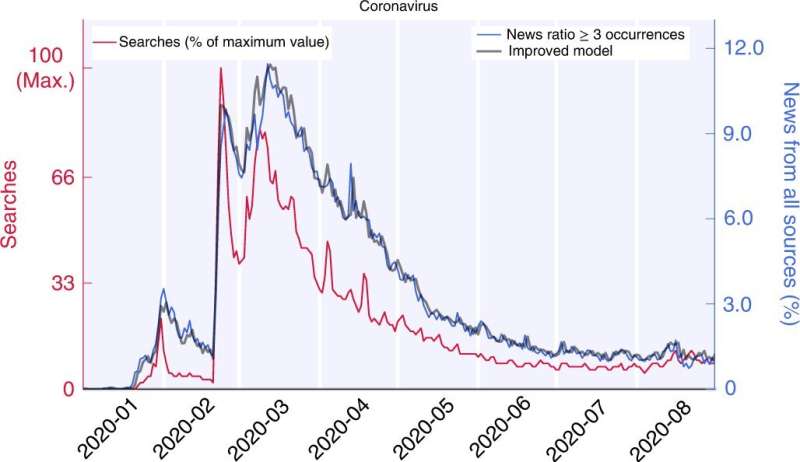May 25, 2022 report
Why disinformation has flourished during the pandemic

A small team of researchers at Sony Computer Science Laboratories in France has explored why disinformation seemed to flourish during the global pandemic. In their paper published in the journal Nature Human Behavior, Pietro Gravino, Giulio Prevedello, Martina Galletti and Vittorio Loretom looked into the supply and demand of COVID-19 news during the pandemic and compared the way news outlets responded.
One of the more remarkable features of the global pandemic is the seemingly unceasing stream of misinformation attributed not just to the virus and the people who were being infected, but in the ways the medical community has responded to the threat. From ridiculous claims regarding supposed cures to the baseless claims made by anti-vaxxers, misinformation has flourished. In this new effort, the researchers wondered why this has been happening and they looked at the sources of news, both reliable and unreliable, as participants in a supply and demand news ecosystem.
The work involved looking at the problem in Italy—they started by obtaining articles printed by Italian media sources in a public database. They also retrieved information from another database of articles published by fact-checking groups, which helped them to separate news sources by their reliability. All such articles constituted the supply side of the system.
To learn more about the demand for information regarding the pandemic, the researchers looked to Google search trends. To compare supply and demand for news, the researchers looked at searches conducted by people looking for information and compared them with the responses that were available from the news sources. The researchers found that those news sources that were identified as generally unreliable tended to respond more quickly to new information than did the more traditional and reliable sources.
The researchers were not able to ascertain why the unreliable news sources were able to respond more quickly, but suggest that the end result was higher visibility for unreliable sources, leading to widespread disinformation gaining traction, and ultimately, acceptance.
More information: Pietro Gravino et al, The supply and demand of news during COVID-19 and assessment of questionable sources production, Nature Human Behaviour (2022). DOI: 10.1038/s41562-022-01353-3
Journal information: Nature Human Behaviour
© 2022 Science X Network





















